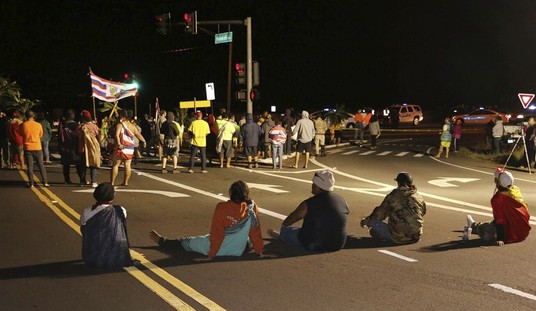On the bright side, the Taliban is doing its part to cut global carbon emissions through curtailed electricity use in the capital city of Kabul.
On the not-so-bright-side, there will be darkness. Lots and lots of darkness:
Kabul is facing blackouts because the Taliban isn’t paying its bills to electricity providers in neighboring countries. https://t.co/2U74CA0k4b
— Ben Kesling (@bkesling) October 3, 2021
Did the Taliban just think the lights stayed on all by themselves?
Kabul could soon plunge into darkness as the Taliban fail to pay $90 million in electricity bills to Central Asian nations and collection from customers is paralysed. My latest on the crisis in Afghanistan with @SaeedShah in @WSJ https://t.co/bwYgJ6Q7Il
— Yaroslav Trofimov (@yarotrof) October 3, 2021
According to the WSJ, there’s no national power grid in the country and “Kabul depends almost completely on imported power from Central Asia”:
Electricity imports from Uzbekistan, Tajikistan and Turkmenistan account for half of Afghanistan’s power consumption nationwide, with Iran providing additional supplies to the country’s west. Domestic production, mostly at hydropower stations, has been affected by this year’s drought. Afghanistan lacks a national power grid, and Kabul depends almost completely on imported power from Central Asia.
Of course, one reason there is no power grid is the Taliban was known to target power lines:
Taliban blow up Afghan power lines over funding dispute – @RuchiKumar reports https://t.co/NOhoNLZyO5 via @TheNationalUAE
— Mina Al-Oraibi (@AlOraibi) March 26, 2018
Welcome back to the Dark Ages:
Not just the figurative Dark Ages approach after the U.S. left & #Taliban 2.0 followed.
Kabul Faces Blackout as Taliban Don’t Pay Electricity Suppliers. https://t.co/u3SfugdPPw @yarotrof & @saeedshah report
— 🚶🏻Curtis S. Chin (@CurtisSChin) October 3, 2021
Oh, it gets worse. . .
U.S. taxpayers funded a power-plant for Kabul but it’s not in use:
The U.S. spent $335 million building a diesel-fueled plant to provide Kabul with electricity, which ended up only supplying only 0.35% of the city’s power. https://t.co/GuCzTq3Tk4
— Lee Fang (@lhfang) September 28, 2021
And it’s not in use because of cheaper rates from Central Asian countries. From the WSJ:
The U.S. Agency for International Development spent $335 million building the Tarakhil diesel power plant to supply Kabul with electricity. But diesel is expensive and dangerous to transport in Afghanistan. By the time the plant opened in 2010, a year behind schedule and tens of millions of dollars above budget, a separate project funded by the Asian Development Bank connected Kabul to far cheaper hydropower from Uzbekistan. By 2015, Tarakhil produced only 1% of its capacity, and 0.35% of Kabul’s power.
Whoops.
***























Join the conversation as a VIP Member